Writing a blog is one thing, but making sure people read it is another. Many businesses create great content but struggle to attract visitors. That’s where SEO (Search Engine Optimization) and digital content marketing services come in.
SEO helps blogs rank higher on search engines like Google. When your blog ranks well, more people can find and read your content. Content marketing services ensures your content is valuable, engaging, and useful to your audience.
At Helixbeat, we focus on optimizing blogs so they rank higher, get more traffic, and help businesses grow. In this blog, we’ll explain how we do it in a simple way.
What is SEO, and why do you need to care about blogging?
SEO is the process of improving your blog so it appears at the top of search engine results. Without proper SEO strategies, your content might not reach the right audience. Digital Content marketing services help businesses craft quality content while ensuring it is optimized for search engines.
The Importance of SEO in Blogging
Many businesses invest in digital content marketing services but fail to integrate proper SEO techniques. SEO is the bridge that connects your valuable content to the right audience. Without it, even the most well-written blogs might go unnoticed. Here are a few reasons why SEO is critical:
- It increases organic traffic.
- It builds credibility and trust.
- It improves the user experience.
- It enhances brand awareness.
Table of Contents
How does Helixbeat optimizes blogs for maximum traffic with content marketing services?
1. Anticipate The Search Terms Used By Your Readers
The first step in Helixbeat’s content marketing service is researching over search intent. The foundation of successful blog SEO starts with keyword research. Knowing what your audience searches for helps you create content that aligns with their needs. Combining SEO techniques with content marketing services ensures that your blog not only ranks higher but also delivers valuable, engaging content to your readers.
Steps for Effective Keyword Research:
- Brainstorm Relevant Keywords: List broad and specific terms related to your industry.
- Use Keyword Tools: Platforms like Ahrefs, Google Keyword Planner, and Semrush help identify keyword search volume and competition.
- Prioritize Keywords: Balance high-volume, competitive keywords with long-tail keywords that have less competition but higher conversion potential (e.g., “best roofing options in Detroit” instead of just “roofing”).
- Utilize Supporting Keywords: Include variations of your main keyword to improve relevance and search engine understanding.
- Track and Adjust: Regularly monitor rankings and refine your keyword strategy based on evolving search trends.
By optimizing your content with the right keywords, your blog becomes more discoverable, attracting the right audience and increasing organic traffic.
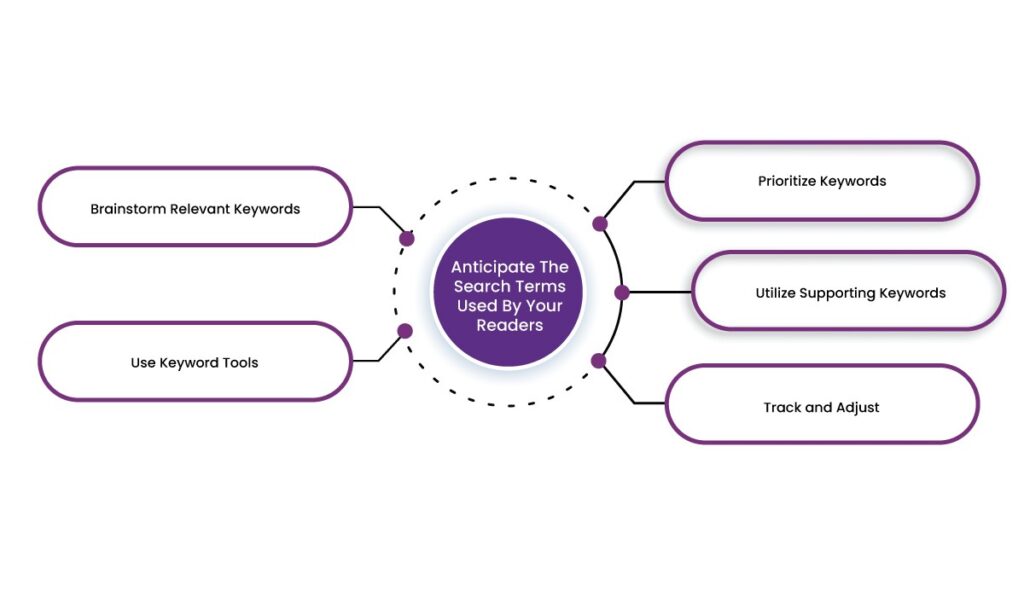
2. Use Keywords in Key Areas
Once you’ve completed your keyword research, strategically incorporating them into your content is crucial. However, avoid keyword stuffing, as search engines now prioritize relevance and quality over density. Misuse can lead to penalties such as lower rankings or content removal.
To properly integrate keywords:
- Title: Use the primary keyword in your blog post’s title to clarify the content for search engines and readers.
- Headings & Subheadings: Include variations of your main keyword to structure your content and provide additional context.
- Body Content: Insert keywords naturally while maintaining readability. Use synonyms and related terms to enhance relevance.
- Meta Description: Optimize it with your primary keyword to improve visibility on search engine result pages (SERPs).
- Image Alt Tags: Describe images with keywords to help search engines understand the content.
With content marketing services, we always prioritize quality and relevance while using keywords effectively. This approach enhances your blog’s searchability, engagement, and overall performance in search rankings.

3. Write Reader-Friendly Content
SEO is important, but creating content that is engaging and valuable to readers should be your top priority.
To enhance readability and engagement:
- Break up large text blocks using headings, bullet points, and numbered lists for easy skimming.
- Use a conversational tone and avoid excessive technical jargon to appeal to a wider audience.
- Craft compelling titles that encourage clicks while being SEO-friendly.
- Incorporate visual elements like images, infographics, or videos to enhance user experience.
- Avoid keyword stuffing or writing solely for rankings—content should be people-first.
Well-structured, engaging content improves user retention, reduces bounce rates, and boosts SEO performance.
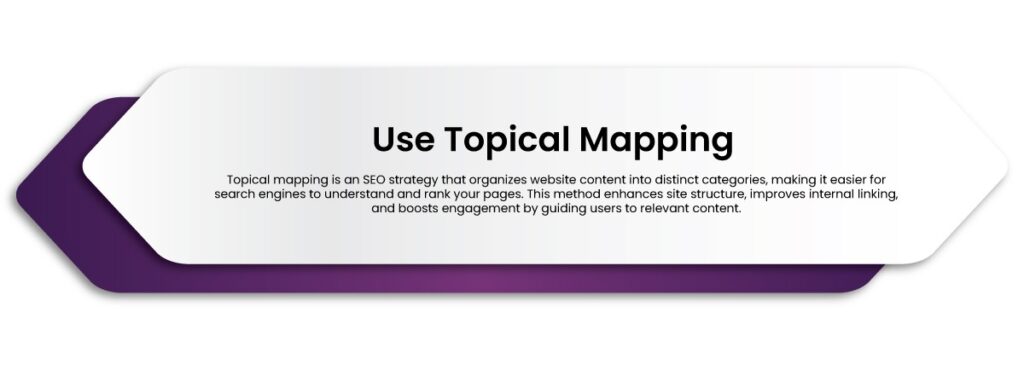
4. Optimize Page Metadata with HTML
Proper use of HTML for page metadata ensures search engines can accurately index and rank your content.
- Title Tags: This appears in the browser tab and search results, making it a crucial ranking factor. Keep it concise and relevant.
- Meta Descriptions: A compelling summary improves click-through rates (CTR) and should contain relevant keywords.
- Header Tags (H1, H2, H3, etc.): These structure your content and signal importance to search engines. Using keywords in headers improves visibility.
Well-optimized metadata ensures that your content reaches the right audience and enhances search rankings.
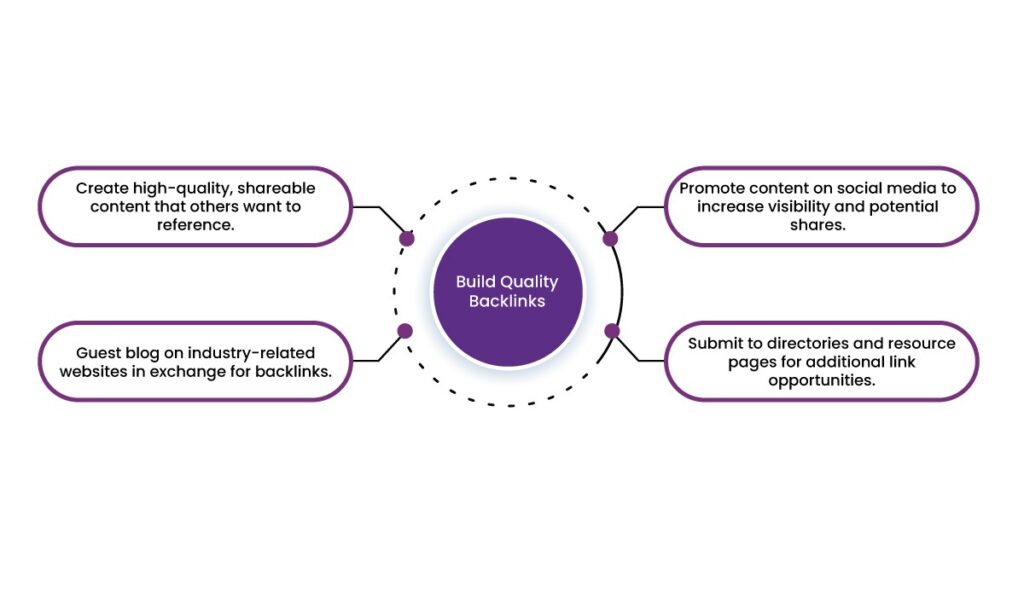
5. Conduct Research & Include Outbound Links
Research-backed content adds credibility and improves SEO. While AI-generated content can speed up production, human research is still essential.
Why research and outbound links matter:
- Credibility & Trust: Citing reputable sources strengthens your authority.
- SEO Boost: Linking to high-quality sources improves content value in search engine algorithms.
- Accuracy: AI can generate errors—fact-checking ensures reliability.
- Ethical Practice: Proper citations respect original content creators and prevent plagiarism.
Well-researched blogs with authoritative references establish your site as a reliable information source.

6. Optimize Images for SEO
Images improve engagement, but they must also be optimized for search engines.
Best practices for image SEO:
- Use high-quality images to maintain professionalism and credibility.
- Rename image files with descriptive, keyword-rich titles instead of generic names like “image1.jpg.”
- Compress images to reduce file size and improve page loading speed.
- Add alt text to help search engines understand image content.
- Use proper HTML image elements (e.g., <img> and <figure>) to improve indexing.
- Submit an image sitemap to enhance discoverability in search results.
- Use supported formats like JPEG, PNG, and GIF for compatibility.
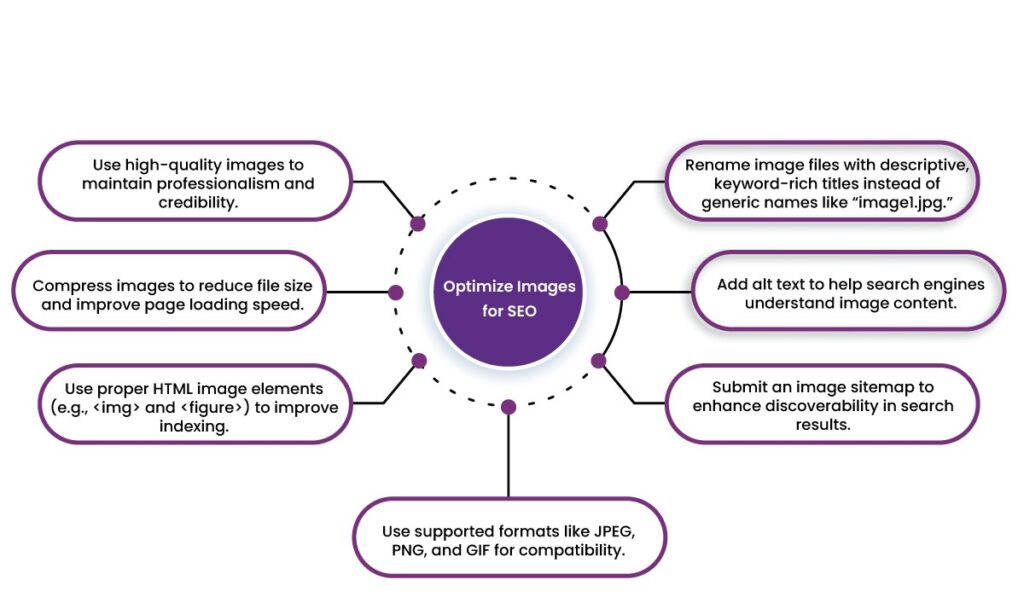
With content marketing services, well-optimized images not only improve search rankings but also contribute to a seamless and engaging user experience.
7. Build Quality Backlinks
Backlinks from reputable sources signal authority and improve search rankings. However, they don’t generate automatically—strategic link-building is necessary.
Effective backlink strategies:
- Create high-quality, shareable content that others want to reference.
- Guest blog on industry-related websites in exchange for backlinks.
- Promote content on social media to increase visibility and potential shares.
- Submit to directories and resource pages for additional link opportunities.
Acquiring authoritative backlinks strengthens your website’s domain authority and enhances search engine rankings.
By implementing these strategies with digital content marketing services, your blog can achieve a balance between SEO optimization and reader engagement, ultimately improving visibility, credibility, and traffic.

8. Cluster Your Keywords in Content Marketing Services
Keyword clustering is the practice of grouping similar keywords into specific topic clusters. This strategy helps you create comprehensive content around a central theme, improving your chances of ranking for multiple related search queries while avoiding keyword cannibalization. When multiple pages compete for the same keyword, they weaken each other’s SEO potential—clustering prevents this.
To implement keyword clustering, start by identifying your primary keyword, which represents the core topic of your content. Then, conduct keyword research to find related terms and group them into clusters. For instance, if your main keyword is “SEO strategies,” relevant clustered keywords could be “keyword research,” “link building,” and “on-page optimization.”
Once you have keyword clusters, create in-depth content covering all aspects of the topic. Strengthen these clusters through internal linking between related articles. This enhances your site structure, boosts user engagement, and improves SEO rankings by signaling topical authority to search engines.
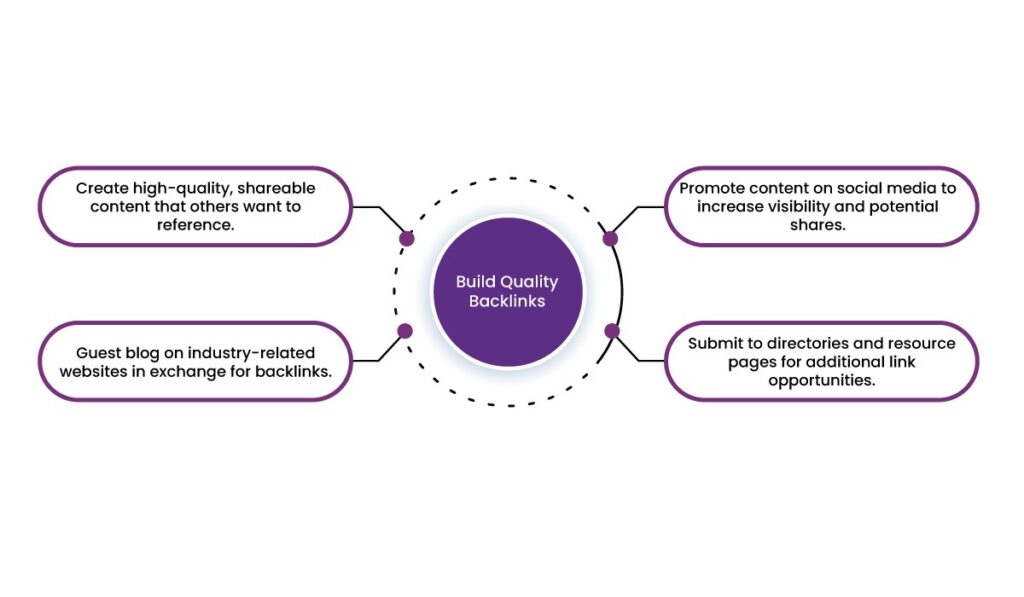
9. Use Topical Mapping
Topical mapping is an SEO strategy that organizes website content into distinct categories, making it easier for search engines to understand and rank your pages. This method enhances site structure, improves internal linking, and boosts engagement by guiding users to relevant content.
Unlike traditional keyword optimization, topical mapping focuses on entity SEO—building a recognizable online brand rather than just ranking for isolated keywords. For instance, a website about healthy recipes can structure its content into categories such as diet types (e.g., vegan, keto), meal types (e.g., breakfast, dinner), and ingredients (e.g., gluten-free, low-carb).
To create an effective topical map, identify your website’s main categories, then break them down into specific subtopics. This ensures logical organization, making it easier for search engines to crawl and index content. A well-structured topical map strengthens SEO, increases user retention, and establishes your website as an authoritative source within its niche.

Ideal Blog Post Length for SEO
For optimal SEO, blog posts should typically be between 1,500 to 2,000 words. This length allows for in-depth coverage, effective keyword usage, and valuable content. However, quality matters more than quantity—concise, informative posts under 1,500 words can still rank well.
We analyze search engine trends, identifying ideal word counts and keyword strategies for maximum SEO impact. Regularly adjusting content based on analytics ensures better rankings and engagement.
Common SEO Mistakes to Avoid
- Keyword Stuffing – Overloading content with keywords disrupts readability and can lead to search engine penalties.
- Lack of Internal & External Links – Linking within your site and to credible sources improves SEO and user engagement.
- Slow Loading Speed – Optimize images, use caching, and reduce plugins to improve site speed and user experience.
- Duplicate Content – Avoid reusing content across multiple pages, as search engines penalize it for lacking originality.
Wrapping up
SEO and digital content marketing services go hand in hand—great content needs optimization, and SEO strategies thrive on high-quality writing. At Helixbeat, we ensure your blogs are not just well-written but also rank-worthy, driving organic traffic and boosting engagement.
From keyword research and reader-friendly formatting to metadata optimization and backlink building, we fine-tune every aspect of your blog for search engine success. Avoiding common SEO mistakes like keyword stuffing and slow page speeds is just as crucial as using topical mapping and keyword clustering for better visibility.
At the end of the day, it’s all about balance—writing for your audience while keeping search engines happy. Whether you’re a business looking to expand reach or a content creator aiming for better rankings, Helixbeat’s SEO expertise can help.
For information about our SEO services and how we can help your blog reach its full potential, contact us at helixbeat digital content marketing services today. Our team can help create high-quality blog content that is optimized for SEO, resulting in increased traffic and conversions for your business.
Frequently Asked Questions
- What is SEO, and why is it important for blogging?
SEO helps blogs rank higher in search engines, increasing visibility and organic traffic.
- How does keyword research improve blog performance?
It identifies search terms users are looking for, ensuring content aligns with audience intent.
- What are the key areas to place keywords in a blog?
Title, headings, meta description, body content, and image alt tags are crucial for SEO.
- How does Helixbeat optimize blogs for better search rankings?
We use keyword research, metadata optimization, backlink strategies, and reader-friendly content.
- Why are backlinks important for SEO?
High-quality backlinks boost domain authority, credibility, and search engine rankings.
- How does content readability impact SEO?
Well-structured, engaging content improves user experience, reducing bounce rates and boosting rankings.
- What common SEO mistakes should bloggers avoid?
Keyword stuffing, slow page speeds, poor internal linking, and duplicate content hurt rankings.
- How does Helixbeat ensure blogs stay optimized over time?
We track analytics, adjust keyword strategies, and update content for evolving search trends.














